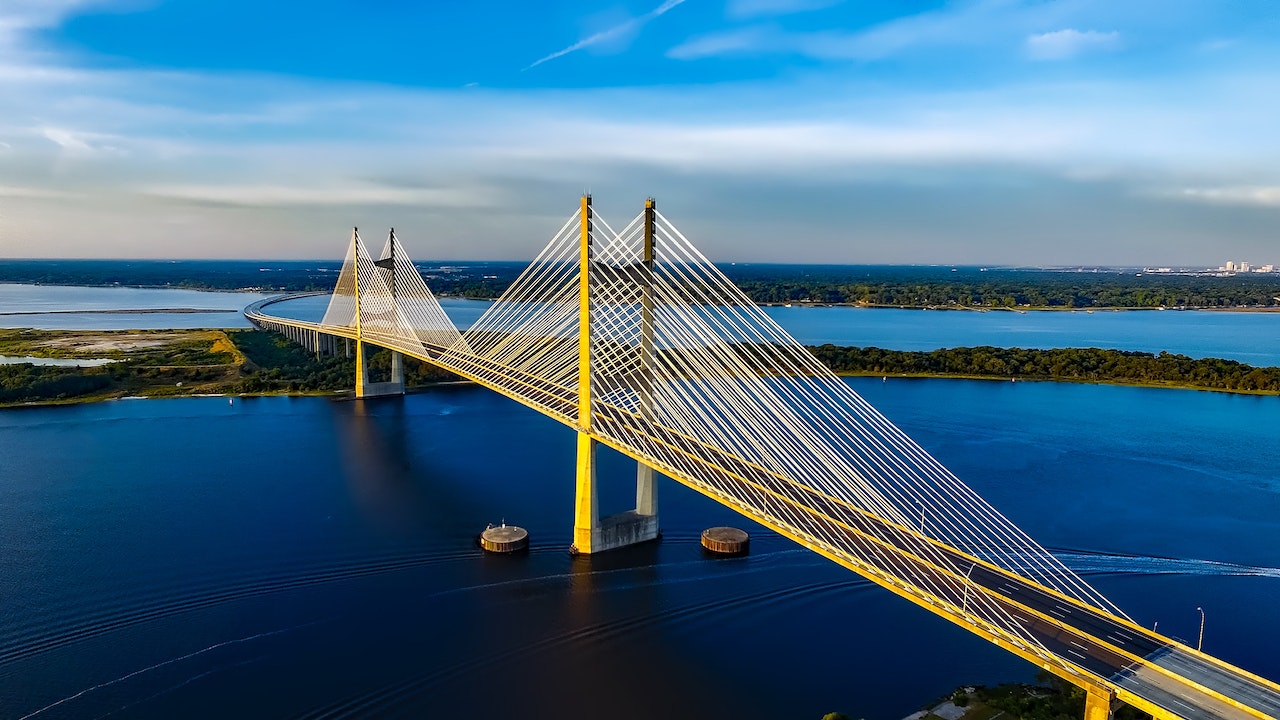Surety Bond Professionals is a family owned and operated bonding agency with over 30 years of experience. With access to a broad range of surety markets, our expert agents are ready to assist with all of your construction bond needs.
What Are Large Bridge Project Grants?
The Federal Highway Administration, part of the U.S. Department of Transportation, operates the Bridge Investment Program established by the Infrastructure Improvement and Jobs Act (IIJA), passed in 2021. Nearly $40 billion is to be distributed over a five-year period to repair or replace thousands of bridges throughout the United States.
The Bridge Investment Program allocates IIJA Large Bridge Project grants through competitive bidding on projects valued at more than $100 million. The minimum grant amount is $50 million, with maximum grant amounts of up to 50% of the total eligible project costs. Large Bridge Project grants are intended to address safety concerns and ensure the movement of freight and people.
Chicago’s Large Bridge Project Grant
In the first round of Large Bridge Project grants, Chicago has been awarded $144 million in IIJA funds to rehabilitate four important bridges over the Calumet River. In evaluating projects, preference was given to those far along in planning and ready to proceed to construction. Other criteria for priority consideration included the need for pre-construction funding and a multi-year grant agreement.
Why These Particular Bridges?
How comfortable would you be driving across a bridge considered to be in an advanced state of deterioration? That’s how bridges are described in “poor” condition according to federal guidelines. Three of the four Chicago bridges targeted for repair and upgrading using funds authorized under the Infrastructure Improvement and Jobs Act (IIJA) fall into that category. The fourth bridge to be rehabilitated using IIJA funds is in “serious” condition, meaning parts of the bridge are at risk of failure.
The specific bridges to be overhauled cross the Calumet River at 92nd, 95th, 100th, and 106th Streets in Chicago’s South Side:
- The 92nd Street bridge (poor condition) was built in 1914 and rehabilitated in 1992 and 2013.
- The 95th Street bridge (poor condition) was opened to traffic in 1958.
- The 100th Street bridge (serious condition) was built in 1927 and has not undergone any major rehabilitation.
- The 106th Street bridge (poor condition) was opened to traffic in 1928, though it took nearly two more years to complete work on the bridge houses. It was last rehabilitated in 1998.
All four bridges are trunnion bascule bridges, also referred to as “Chicago style” bridges. “Trunnion” is the French word for “pivot point,” and “bascule” translates as “seesaw.” Together they describe how the bridges are raised to allow cargo ships to pass beneath on their voyage to or from the Illinois International Port District and the many industrial facilities along the Calumet River. Delays in the movement of freight along the Calumet River ultimately contribute to higher prices for goods and materials throughout the country.
Each bridge is raised about 5,000 times a year. Collectively, the four bridges carry an average of more than 40,000 vehicles across the river each day. They connect the communities on either side of the river. The bridges also enable ships to access the Illinois River, which can carry them all the way to the Gulf of Mexico. Clearly, the four bridges targeted by Chicago’s Large Bridge Project grant make a vital contribution to the economy of the nation as well as the region.
What Does This Mean for Road and Bridge Contractors?
Additional rounds of grant awards will follow, creating significant opportunities for the involvement of contractors and subcontractors with the experience and resources to carry out infrastructure improvement projects. It’s a good time for smaller contractors to make connections with larger ones that might be looking for subcontractors. It’s also a good time for contractors of all sizes to build their bonding capacity to enable them to take on more and bigger projects.
It’s important to understand what sureties take into consideration in underwriting and guaranteeing the kinds of construction surety bonds typically required when bidding on projects receiving government funding. Project owners at both the federal and state levels require potential contractors to furnish bid bonds, performance bonds, and payment bonds at a minimum. In addition, other construction bonds, such as maintenance bonds and supply bonds may also be required.
Call Us Today
Our surety bond professionals will help you grow your revenue by maximizing your surety capacity. Call us today!





